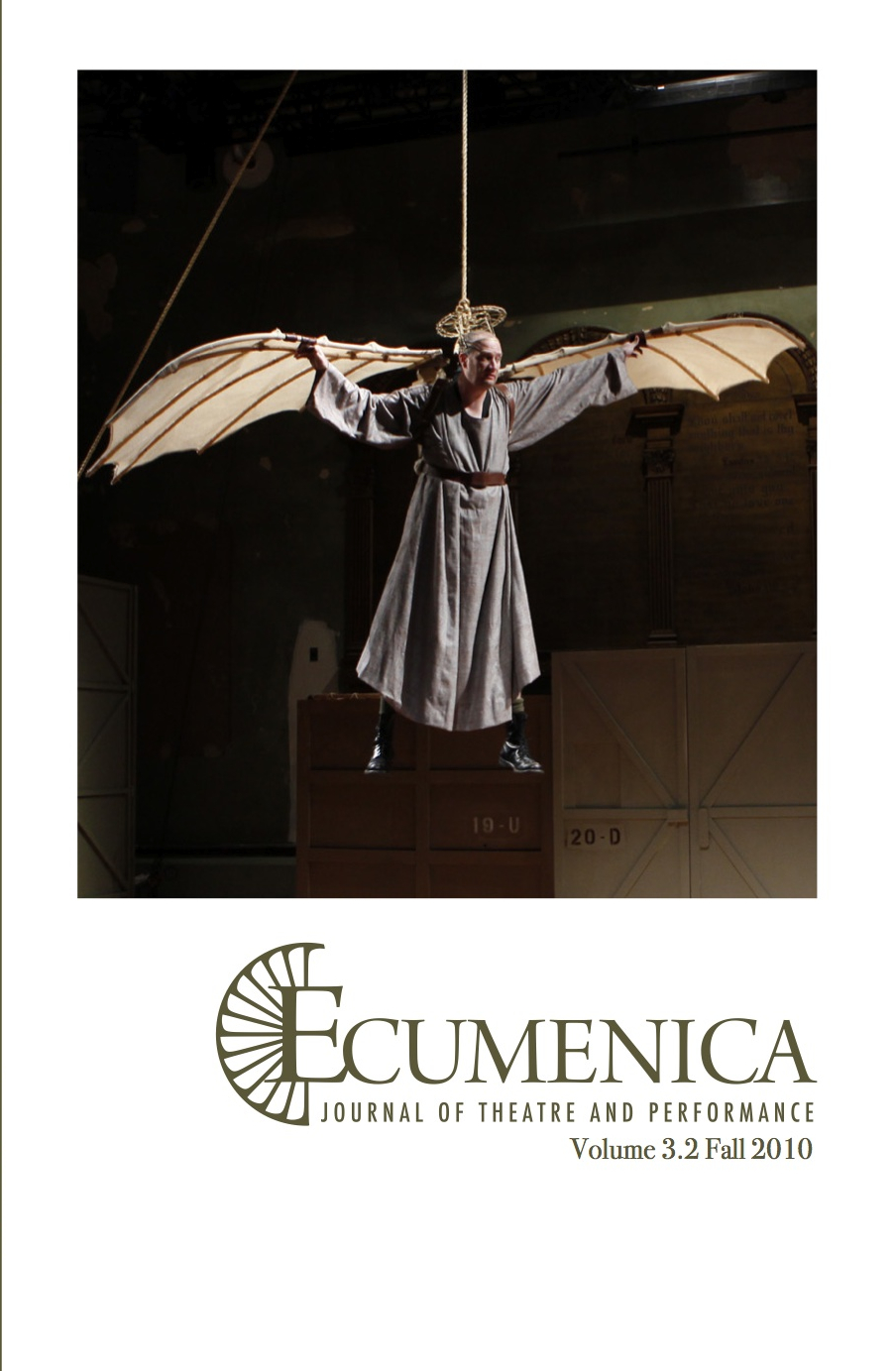
Fall 2010
Letter from the Editor
Carolyn D. Roark
Feature: Incorporation of the Incar(nation): Dorothy L. Sayers’s The Man Born to be King
Bethany Wood
Feature: Ceremonial Embodiment: The Problem of “Liturgical Drama”
Donnalee Dox
Abstract: Dox argues that the unique dynamic between corporal body and immutable soul that permeated Christian theology in the Middle Ages renders contemporary performance theory inadequate to describe medieval embodied ceremonies. While modern dramaturgy casts the body as signifier for a material referent, the medieval body is representative of an immaterial soul. In the absence of a codified treatise of medieval representational practices, Dox grounds her positioning of soul and body in a comparison of medieval European liturgical practices with those described in the Sanskrit Natayasastra and the medieval JapaneseKadensho, both of which posit performance as a physicalization of an inner spirit. The absence of masks in European liturgical practices, as well as an emphasis on imitation as a method of spiritual improvement found in two non-liturgical texts, implies a medieval European understanding of the body as a representation of the soul. This construction of medieval embodiment complicates traditional narratives of European performance history.
Feature: “This Extraordinary Power”: Authority, Submission, and Freedom in the Actor-Director Relationship
Ben Spatz
Abstract: This article explores the power dynamics of actor-director relationships through a comparison with two other kinds of intimate partnership drawn from radically different contexts: first, those of female mystics and male priests in medieval Christianity; and second, those of “tops” and “bottoms” in contemporary BDSM play. Focusing on the polarization of power, the essay aims to reexamine the ethical and political implications of acting, theatre, and performance. To this end, sites of theatrical training and rehearsal are reconceived as “laboratories of power” in which equity and polarization interact in complex ways. Jerzy Grotowski’s work serves as a key example of intensive and highly productive polarization between actor and director.
Feature: Bible Lite for Schools: How Joseph and the Amazing Technicolor Dreamcoat Redefines Classical Old Testament Theatre for Young Audiences
David Chandler
Highlight: Mapping the Sexual and the Spiritual: An Interview with Tim Miller
Wendy Clupper
Profile: Sekou Sundiata: Poet and Performer, 1948-2007
Linell Ajello
- Calee Lee—The Transformative Power of Performance: A New Aesthetics, Erica Fischer-Lichte
- Sharon L. Green—Monkey Business Theatre, Robert Laughlin and Sna Jtz’ibajom.
- Jill Stevenson—Passion Play, Irondale Center, New York, NY
- Jennifer-Scott Mobley—Bloody, Bloody Andrew Jackson, The Public Theatre/Les Freres Corbusier, New York, NY
